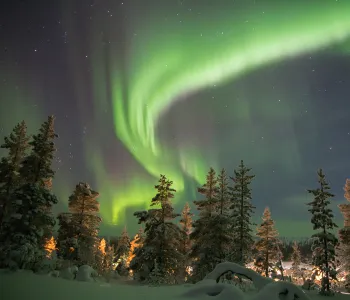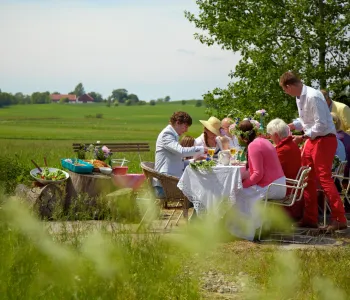
SOME SWEDISH CULTURE
Crayfish premiere
The crayfish premiere was long the much-awaited day of the year when Swedes were allowed to start fishing for and selling crayfish, to prevent overfishing of the red aquatic animal. Although there is no longer an officially regulated crayfish premiere, the celebrations in August continue!
Family and friends meet dressed up in silly hats at a table full of whole cooked crayfish, crispbread, spicy cheese, prawns and traditional smorgasbord dishes. Singing and strong drinks such as schnapps and beer are also part of the celebrations.
Midsummer
Midsummer is a festival that is celebrated around the summer solstice at the end of June every year. For many Swedes, this is the highlight of summer and, according to folklore, a night full of magic and power.
Dancing round the maypole, herring and new potatoes on the table are all part of the celebrations of the longest day of the year when the night is at its shortest.

St Lucia
On 13 December every year, Swedes celebrate St Lucia, a tradition with its roots in 17th and 18th-century peasant society that has attracted considerable attention with so-called Lucia processions in schools, day-care centres, associations and workplaces since the beginning of the 20th century.
Lucia, or the Queen of Light as she is also called, comes with lights in her hair, with her maids and ‘star boys’ bringing hope of lighter times during what is considered the longest night of the year.
Nobel Day
Every year since 1901, the Nobel Prize has been awarded on 10 December. The prize is an international award in physics, chemistry, physiology or medicine, literature and peace work in memory of the Swedish chemist and inventor Alfred Nobel.
The award ceremony takes place before the big Nobel Banquet in Stockholm. The Nobel Peace Prize is awarded at a ceremony in Oslo. Heads of state and royalty witness as the prize-winner is presented with a gold medal, a diploma and a sum of money, which in some years can be up to 10 million SEK





